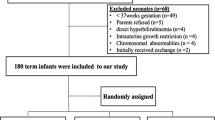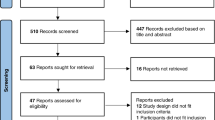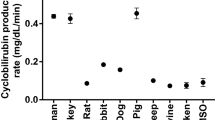Abstract
Summary: Blue and white phototherapy was given to infant (and weanling) homozygous Gunn rats treated with different doses of riboflavin-5-phosphate (ribofl.5'p.) During the first hours after a flavin-injection, the effect of phototherapy with both types of fluorescent lamps was enhanced. With equal radiant power applied, the steepness of serum bilirubin decline depended on the ribofl.5'p. dose injected. After oral or cutaneous application, no similar effect occurred. After a single flavin dose, the serum bilirubin decline lasted for at least 3 hr. Nevertheless, in long-term studies with repeated injections (100 mg/kg every 48 hr), no protective effect beyond that of phototherapy alone could be ascertained on the Purkinje cells in the cerebella of the rats.
In the skin of the animals, fluorescence was macroscopically noticeable after ribofl.5'p. injections. When an effective irradiance of about 3.0 mW/cm2 and a high flavin dose (100–200 mg/kg) was administered, histologic investigations of the skin in the abdominal and back region revealed a reversible inflammatory reaction with edema and morphologic changes in the epidermal cells that culminated 12–24 hr after the injection. After a further increase of the effective irradiance, tremendous vesicles on paws, ears, and tails were observed in most of the animals 24–72 hr after the flavin injections. The content of the blisters was primarily serous, later on, often hemorrhagic. Finally, necrosis developed.
Acute toxicity of ribofl.5'p. differed markedly when the infant rats (homozygous jaundiced as well as heterozygous nonjaundiced) were kept in the dark or under intense blue phototherapy. Much higher doses were tolerated in the dark.
Moreover, it could be demonstrated that ribofl.5'p. does not influence serum bilirubin of jaundiced Gunn rats kept in complete darkness. That suggests that the drug itself does not compete for albumin binding sites. But certain riboflavin ampules (Beflavin) contain stabilizers that considerably displace bilirubin from albumin bonds. Riboflavin disturbs direct photometric bilirubin measurements, but not the diazo reaction. When bilirubin is to be measured in sera containing riboflavin, lights must be extremely dim. Photodegradation in vitro is highly accelerated by the sensitizer.
Speculation: Riboflavin certainly enhances photodegradation of bilirubin. But, because the animal tests revealed serious side effects, it cannot be regarded as a safe adjunct to phototherapy in human infants.
Similar content being viewed by others
Log in or create a free account to read this content
Gain free access to this article, as well as selected content from this journal and more on nature.com
or
Author information
Authors and Affiliations
Rights and permissions
About this article
Cite this article
Ballowitz, L., Bunjamin, A., Hanefeld, F. et al. Effects of Riboflavin on Gunn Rats under Phototherapy. Pediatr Res 13, 1307–1315 (1979). https://doi.org/10.1203/00006450-197912000-00001
Issue date:
DOI: https://doi.org/10.1203/00006450-197912000-00001



